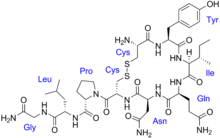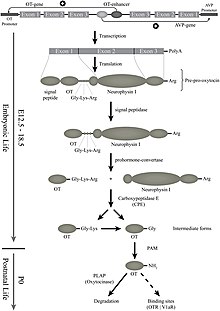Ethnocentrism in social science and anthropology—as well as in colloquial English discourse—means to apply one's own culture or ethnicity as a frame of reference to judge other cultures, practices, behaviors, beliefs, and people, instead of using the standards of the particular culture involved. Since this judgement is often negative, some people also use the term to refer to the belief that one's culture is superior to, or more correct or normal than, all others—especially regarding the distinctions that define each ethnicity's cultural identity, such as language, behavior, customs, and religion. In common usage, it can also simply mean any culturally biased judgment. For example, ethnocentrism can be seen in the common portrayals of the Global South and the Global North.
Ethnocentrism is sometimes related to racism, stereotyping, discrimination, or xenophobia. However, the term "ethnocentrism" does not necessarily involve a negative view of the others' race or indicate a negative connotation. The opposite of ethnocentrism is cultural relativism, which means to understand a different culture in its own terms without subjective judgments.
The term "ethnocentrism" was first applied in the social sciences by American sociologist William G. Sumner. In his 1906 book, Folkways, Sumner describes ethnocentrism as "the technical name for the view of things in which one's own group is the center of everything, and all others are scaled and rated with reference to it." He further characterized ethnocentrism as often leading to pride, vanity, the belief in one's own group's superiority, and contempt for outsiders.
Over time, ethnocentrism developed alongside the progression of social understandings by people such as social theorist, Theodore W. Adorno. In Adorno's The Authoritarian Personality, he and his colleagues of the Frankfurt School established a broader definition of the term as a result of "in group-out group differentiation," stating that ethnocentrism "combines a positive attitude toward one's own ethnic/cultural group (the in-group) with a negative attitude toward the other ethnic/cultural group (the out-group)." Both of these juxtaposing attitudes are also a result of a process known as social identification and social counter-identification.
Origins and development
The term ethnocentrism derives from two Greek words: "ethnos," meaning nation, and "kentron," meaning center. Scholars believe this term was coined by Polish sociologist Ludwig Gumplowicz in the 19th century, although alternate theories suggest that he only popularized the concept as opposed to inventing it. He saw ethnocentrism as a phenomenon similar to the delusions of geocentrism and anthropocentrism, defining Ethnocentrism as "the reasons by virtue of which each group of people believed it had always occupied the highest point, not only among contemporaneous peoples and nations, but also in relation to all peoples of the historical past."
Subsequently, in the 20th century, American social scientist William G. Sumner proposed two different definitions in his 1906 book Folkways. Sumner stated that "Ethnocentrism is the technical name for this view of things in which one's own group is the center of everything, and all others are scaled and rated with reference to it." In the War and Other Essays (1911), he wrote that "the sentiment of cohesion, internal comradeship, and devotion to the in-group, which carries with it a sense of superiority to any out-group and readiness to defend the interests of the in-group against the out-group, is technically known as ethnocentrism." According to Boris Bizumic it is a popular misunderstanding that Sumner originated the term ethnocentrism, stating that in actuality he brought ethnocentrism into the mainstreams of anthropology, social science, and psychology through his English publications.
Several theories have been reinforced through the social and psychological understandings of ethnocentrism including T.W Adorno's Authoritarian Personality Theory (1950), Donald T. Campbell's Realistic Group Conflict Theory (1972), and Henri Tajfel's Social identity theory (1986). These theories have helped to distinguish ethnocentrism as a means to better understand the behaviors caused by in-group and out-group differentiation throughout history and society.
Ethnocentrism in social sciences
In social sciences, ethnocentrism means to judge another culture based on the standard of one's own culture instead of the standard of the other particular culture. When people use their own culture as a parameter to measure other cultures, they often tend to think that their culture is superior and see other cultures as inferior and bizarre. Ethnocentrism can be explained at different levels of analysis. For example, at an intergroup level, this term is seen as a consequence of a conflict between groups; while at the individual level, in-group cohesion and out-group hostility can explain personality traits. Also, ethnocentrism can helps us to explain the construction of identity. Ethnocentrism can explain the basis of one's identity by excluding the outgroup that is the target of ethnocentric sentiments and used as a way of distinguishing oneself from other groups that can be more or less tolerant. This practice in social interactions creates social boundaries, such boundaries define and draw symbolic boundaries of the group that one wants to be associated with or belong to. In this way, ethnocentrism is a term not only limited to anthropology but also can be applied to other fields of social sciences like sociology or psychology.
Anthropology
The classifications of ethnocentrism originate from the studies of anthropology. With its omnipresence throughout history, ethnocentrism has always been a factor in how different cultures and groups related to one another. Examples including how historically, foreigners would be characterized as "Barbarians," or how China believed their nation to be the "Empire of the Center" and viewed foreigners as privileged subordinates. However, the anthropocentric interpretations initially took place most notably in the 19th century when anthropologists began to describe and rank various cultures according to the degree to which they had developed significant milestones, such as monotheistic religions, technological advancements, and other historical progressions.
Most rankings were strongly influenced by colonization and the belief to improve societies they colonized, ranking the cultures based on the progression of their western societies and what they classified as milestones. Comparisons were mostly based on what the colonists believed as superior and what their western societies have accomplished. Thomas Macaulay, an English politician in the 19th Century, attempted to validate the opinion that "one shelf of a Western library" had more knowledge then the years of text and literature developed by the Eastern societies. Ideas developed by Charles Darwin has ethnocentric ideals where societies who believed they were superior were most likely to survive and prosper. Edward Said's orientalist concept represented how Western reactions to non-Western societies were based on an "unequal power relationship" that Western peoples developed due to colonization and the influence it held over non-Western societies.
The ethnocentric classification of "primitive" were also used by 19th and 20th century anthropologists and represented how unawareness in cultural and religious understanding changed overall reactions to non-Western societies. Modern anthropologist Sir Edward Burnett Tylor wrote about "primitive" societies in Primitive Culture (1871) creating a "civilization" scale where it was implied that ethnic cultures preceded civilized societies. The use of "savage" as a classification is modernly known as "tribal" or "pre-literate" where it was usually referred as a derogatory term as the "civilization" scale became more common. Examples that demonstrate a lack of understanding include when European travelers judged different languages based on that fact that they could not understand it and displayed a negative reaction, or the intolerance displayed by Westerners when exposed to unknown religions and symbolisms. Georg Wilhelm Friedrich Hegel, a German philosopher, justified Western colonization by reasoning that since the non-Western societies were "primitive" and "uncivilized," their culture and history was not worth conserving and should allow Westernization.
Anthropologist Franz Boas saw the flaws in this formulaic approach to ranking and interpreting cultural development and committed himself to overthrowing this inaccurate reasoning due to many factors involving their individual characteristics. With his methodological innovations, Boas sought to show the error of the proposition that race determined cultural capacity. In his 1911 book The Mind of Primitive Man, Boas wrote that:
It is somewhat difficult for us to recognize that the value which we attribute to our own civilization is due to the fact that we participate in this civilization, and that it has been controlling all our actions from the time of our birth; but it is certainly conceivable that there may be other civilizations, based perhaps on different traditions and on a different equilibrium of emotion and reason, which are of no less value than ours, although it may be impossible for us to appreciate their values without having grown up under their influence.
Together, Boas and his colleagues propagated the certainty that there are no inferior races or cultures. This egalitarian approach introduced the concept of cultural relativism to anthropology, a methodological principle for investigating and comparing societies in as unprejudiced as possible and without using a developmental scale as anthropologists at the time were implementing. Boas and anthropologist Bronisław Malinowski argued that any human science had to transcend the ethnocentric views that could blind any scientist's ultimate conclusions.
Both had also urged anthropologists to conduct ethnographic fieldwork to overcome their ethnocentrism. To help, Malinowski would develop the theory of functionalism as guides for producing non-ethnocentric studies of different cultures. Classic examples of anti-ethnocentric anthropology include Margaret Mead's Coming of Age in Samoa (1928), which in time has met with severe criticism for its incorrect data and generalisations, Malinowski's The Sexual Life of Savages in North-Western Melanesia (1929), and Ruth Benedict's Patterns of Culture (1934). Mead and Benedict were two of Boas's students.
Scholars generally agree that Boas developed his ideas under the influence of the German philosopher Immanuel Kant. Legend has it that, on a field trip to the Baffin Islands in 1883, Boas would pass the frigid nights reading Kant's Critique of Pure Reason. In that work, Kant argued that human understanding could not be described according to the laws that applied to the operations of nature, and that its operations were therefore free, not determined, and that ideas regulated human action, sometimes independent of material interests. Following Kant, Boas pointed out the starving Eskimos who, because of their religious beliefs, would not hunt seals to feed themselves, thus showing that no pragmatic or material calculus determined their values.
Causes
Ethnocentrism is believed to be a learned behavior embedded into a variety of beliefs and values of an individual or group.
Due to enculturation, individuals in in-groups have a deeper sense of loyalty and are more likely to following the norms and develop relationships with associated members. Within relation to enculturation, ethnocentrism is said to be a transgenerational problem since stereotypes and similar perspectives can be enforced and encouraged as time progresses. Although loyalty can increase better in-grouper approval, limited interactions with other cultures can prevent individuals to have an understanding and appreciation towards cultural differences resulting in greater ethnocentrism.
The social identity approach suggests that ethnocentric beliefs are caused by a strong identification with one's own culture that directly creates a positive view of that culture. It is theorized by Henri Tajfel and John C. Turner that to maintain that positive view, people make social comparisons that cast competing cultural groups in an unfavorable light.
Alternative or opposite perspectives could cause individuals to develop naïve realism and be subject to limitations in understandings. These characteristics can also lead to individuals to become subject to ethnocentrism, when referencing out-groups, and black sheep effect, where personal perspectives contradict those from fellow in-groupers.
Realistic conflict theory assumes that ethnocentrism happens due to "real or perceived conflict" between groups. This also happens when a dominant group may perceive the new members as a threat. Scholars have recently demonstrated that individuals are more likely to develop in-group identification and out-group negatively in response to intergroup competition, conflict, or threat.
Although the causes of ethnocentric beliefs and actions can have varying roots of context and reason, the effects of ethnocentrism has had both negative and positive effects throughout history. The most detrimental effects of ethnocentrism resulting into genocide, apartheid, slavery, and many violent conflicts. Historical examples of these negative effects of ethnocentrism are The Holocaust, the Crusades, the Trail of Tears, and the internment of Japanese Americans. These events were a result of cultural differences reinforced inhumanely by a superior, majority group. In his 1976 book on evolution, The Selfish Gene, evolutionary biologist Richard Dawkins writes that "blood-feuds and inter-clan warfare are easily interpretative in terms of Hamilton's genetic theory." Simulation-based experiments in evolutionary game theory have attempted to provide an explanation for the selection of ethnocentric-strategy phenotypes.
The positive examples of ethnocentrism throughout history have aimed to prohibit the callousness of ethnocentrism and reverse the perspectives of living in a single culture. These organizations can include the formation of the United Nations; aimed to maintain international relations, and the Olympic Games; a celebration of sports and friendly competition between cultures.
Effects
A study in New Zealand was used to compare how individuals associate with in-groups and out-groupers and has a connotation to discrimination. Strong in-group favoritism benefits the dominant groups and is different from out-group hostility and/or punishment. A suggested solution is to limit the perceived threat from the out-group that also decreases the likeliness for those supporting the in-groups to negatively react.
Ethnocentrism also influences consumer preference over which goods they purchase. A study that used several in-group and out-group orientations have shown a correlation between national identity, consumer cosmopolitanism, consumer ethnocentrism, and the methods consumer choose their products, whether imported or domestic.
Ethnocentrism and racism
Ethnocentrism is usually associated with racism. However, as mentioned before, ethnocentrism does not necessarily implicate a negative connotation. In European research the term racism is not linked to ethnocentrism because Europeans avoid applying the concept of race to humans; meanwhile, using this term is not a problem for American researchers. Since ethnocentrism implicated a strong identification with one's in-group, it mostly automatically leads to negative feelings and stereotyping to the members of the outgroup, which can be confused with racism. Finally, scholars agree that avoiding stereotypes is an indispensable prerequisite to overcome ethnocentrism; and mass media play a key role regarding this issue.
Effects of ethnocentrism in the media
Mass media plays an important role in our current society. We are constantly exposed to media content every day. Researchers had found that ethnocentrism is dysfunctional in communication and similar fields because the lack of acceptance of other cultures leads to the creation of barriers for people of different backgrounds to interact with each other. The presence of ethnocentrism in media content creates an issue in the exchange of messages in the communication process. The media industry is dominated by the Global North, so Western ethnocentrism tends to be exposed in the media. This can be seen in the predominance of Westerner content in TV shows, film, and other forms of mass media. Some Western shows tend to depict foreign cultures as inferior or strange in contrast to their own culture.
Film
Cinema has been around our society since the beginning of the 20th century, and it is an important tool that allow to entertain and/or educate the viewer. Western companies are usually the leaders of the film industry. Thus, it is common to be exposed to content based on Westerners' point of view. Examples of ethnocentrism are constantly seen in films whether intentionally or unintentionally. A clear example of this can be seen on the American animated film Aladdin by Disney in 1992; the opening song of the movie is "Arabian Nights," it is mentioned on the lyrics that that land "it's barbaric, hey, but it's home," which had caused debates among the audience because it could lead to thinking that the Arabic culture is barbaric. Examples like this abound on many Hollywood films. Experts on the field propose that a way of overcoming ethnocentrism is to avoid the use of stereotypes in films. Therefore, the presence of ethnocentrism in cinema leads to stereotypical images of cultures that differ from ours.
Social media
A considerable number of people are exposed to social media, whose purpose is to encourage interaction among users. However, that exchange of information can be hindered by ethnocentrism because it can diminish the interest of interacting with people from other cultures.








